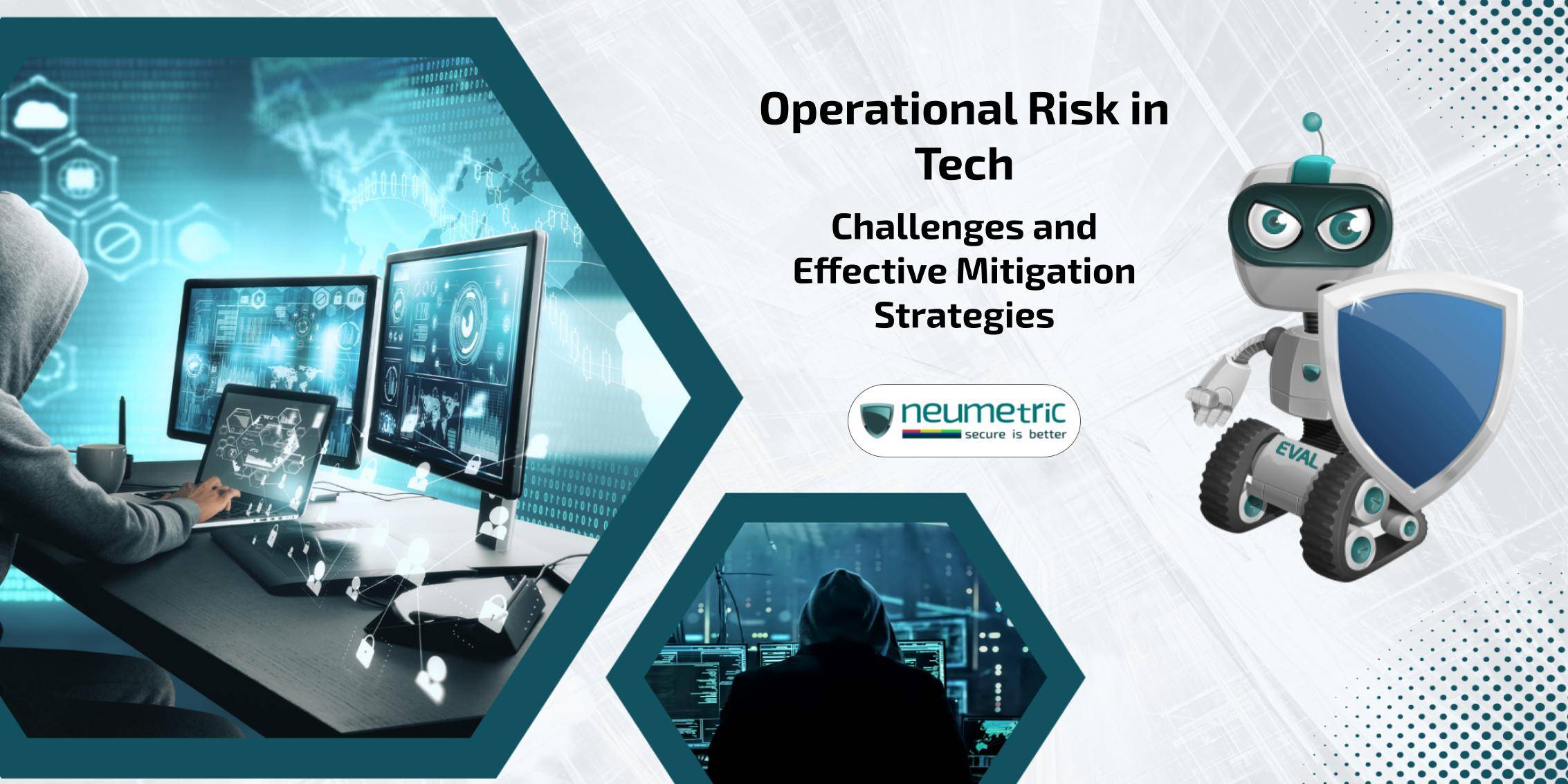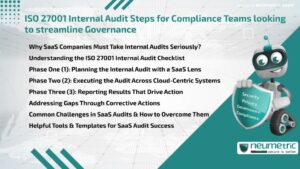Table of Contents
ToggleIntroduction
In the dynamic landscape of technology, operational risk has become a focal point for businesses navigating an intricate web of interconnected systems. The tech industry, driven by innovation & rapid advancements, faces a myriad of operational challenges that can disrupt daily operations & impact the overall health of organisations. Operational risk in technology spans a wide spectrum, from internal processes & system failures to external threats like cyber attacks & supply chain disruptions.
As organisations increasingly rely on complex technological infrastructures, the potential for operational risks has surged, making it imperative to understand & effectively mitigate these challenges. The evolving nature of technology introduces a constant need for adaptability & proactive risk management strategies. In this context, it becomes crucial to delve into the specific challenges & common operational risks that confront the tech industry & explore effective mitigation strategies to ensure the resilience & continuity of operations.
Understanding operational risk
Operational risk in the tech industry is like navigating a digital minefield – it’s the hidden challenges that can blow up when you least expect it. To tackle this, let’s break it down into three main aspects: definition & types, the main causes & sources & the hefty impact it can have on a tech company.
- Definition & types: Operational risk in tech is essentially the risk of something going haywire within the day-to-day workings of a company. It comes in various flavours & understanding these is crucial for effective risk management. People-related risks involve human errors or even the nefarious insider threats. Process risks revolve around the internal workings – inefficient procedures, inadequate training & such. System/tech risks are all about the technological infrastructure – system failures, cybersecurity breaches & the nightmares of every IT professional. Lastly, external events encompass the curveballs from the world outside, like natural disasters or geopolitical shocks.
- Main causes & sources in Tech Companies: Now, let’s get real about where these operational risks sprout from in the tech world. They often find their roots in the rapid pace of technological evolution, which can render systems outdated or vulnerable. Cyber threats, ranging from sophisticated hacking attempts to human error-induced data breaches, are major culprits. Supply chain disruptions, be it due to a global pandemic or geopolitical tensions, can send shockwaves through the industry.
- Impact on business: The impact of operational risks in tech isn’t just about glitches & downtime; it’s a financial & reputational rollercoaster. Financially, it can lead to direct losses from system downtimes, data breaches, or even legal repercussions. Reputation-wise, a single cyber attack or prolonged operational disruption can tarnish a company’s image, eroding customer trust & loyalty. In an era where digital credibility is as valuable as gold, these hits can be a serious setback for any tech enterprise. Understanding & addressing these operational risks is not just a matter of avoiding a headache; it’s about securing the very foundation of a tech company’s existence.
Key operational risks & challenges
- Cybersecurity threats & data breaches: In the ever-expanding digital realm, cybersecurity threats loom like silent assassins. A breach not only puts sensitive data at risk but also jeopardises the trust that users & clients place in a tech company. The challenge here is not just fending off attacks but staying one step ahead of increasingly sophisticated cybercriminals. It’s a digital arms race that demands constant vigilance.
- IT Systems/Software Failures & Disruptions: When your entire existence is entwined with lines of code & intricate systems, even a minor glitch can cause havoc. IT systems & software failures not only disrupt operations but also tarnish the reputation of a tech company. The challenge lies in maintaining a delicate balance between innovation & stability, ensuring that updates & advancements don’t inadvertently become sources of system failures.
- Execution, Delivery & Process Management Failures: From concept to execution, a tech company juggles numerous processes. Failures in execution, delayed deliveries, or mismanagement of processes can lead to not only financial losses but also frustration among clients. The challenge here is creating a streamlined workflow that minimises bottlenecks, ensuring that every stage from ideation to delivery is a well-oiled machine.
- Team/Talent Issues: In the tech world, where human capital is as vital as the technology itself, team dynamics play a pivotal role. High turnover & skill gaps can disrupt projects, hinder innovation & impact the overall efficiency of a company. Retaining top talent, fostering a positive work culture & providing ongoing training are essential challenges in talent management for tech companies.
- Supply Chain Disruptions: The global interconnectedness of tech means that supply chain disruptions can have far-reaching consequences. Whether due to geopolitical tensions or unexpected events like a pandemic, interruptions in the supply chain can lead to delays in product launches & impact the overall operational continuity. Tech companies need to diversify their supply chain, establish contingency plans & maintain robust communication with suppliers to navigate these challenges effectively.
- Compliance & Legal Issues: The tech industry operates in a regulatory landscape that is constantly evolving. Navigating compliance & legal requirements is a persistent challenge. Failure to adhere to regulations not only invites legal trouble but can also stain a company’s reputation. Staying abreast of regulatory changes, implementing robust compliance frameworks & having a proactive approach to legal matters are imperative for mitigating these operational risks.
Effective Mitigation Strategies
- Robust Incident Response & Business Continuity Planning: Picture this: your system crashes, or there’s a data breach. What’s the plan? Robust incident response & business continuity planning are your knights in shining armour. By having a well-thought-out playbook for when things hit the fan, you’re not just reacting but responding strategically. This involves identifying potential risks, outlining clear response procedures & ensuring that critical functions can continue seamlessly even in the face of disruptions.
- Increased Focus on Quality Assurance & Control Testing: In the tech world, ‘glitches’ are not charming; they are potential nightmares. Quality assurance & control testing act as gatekeepers, preventing subpar products or services from reaching the public eye. By investing in rigorous testing procedures, from the development stage to the final product, companies can catch & rectify issues before they escalate. This not only enhances the reliability of systems but also minimises the likelihood of operational failures.
- Improved Vendor/Third-Party Screening & Oversight: Tech companies often rely on a web of vendors & third parties. However, this interconnectedness can be a double-edged sword. Strengthening the screening process for vendors & implementing robust oversight mechanisms ensures that the entire ecosystem is resilient. It’s about trusting but verifying, making sure that everyone in your digital ecosystem is as committed to security & reliability as you are.
- Cross-Training & Succession Planning for Critical Roles: Imagine the key player in your tech orchestra suddenly leaves or is unavailable. Cross-training & succession planning are the backstage heroes here. By ensuring that multiple team members are familiar with critical roles, you’re not left in the lurch when someone is out. It’s about creating a team that can seamlessly fill in the gaps, maintaining operational continuity even in the face of unexpected personnel changes.
- Proactive Cybersecurity & Access Controls: In the realm of technology, cybersecurity is not a luxury; it’s a necessity. Proactive measures, from regular system audits to staying ahead of the latest threats, form the backbone of effective risk mitigation. Implementing robust access controls ensures that only those who need access get it, minimising the potential for internal breaches. It’s like having a digital bouncer, ensuring only the authorised guests get in.
- Real-Time Monitoring, Analysis & Risk Assessments: No more waiting for the quarterly report to identify potential risks. Real-time monitoring & analysis, coupled with regular risk assessments, provide a dynamic understanding of the ever-changing tech landscape. It’s about staying ahead of the curve, identifying potential issues before they escalate & adapting your strategies in real-time to navigate the turbulent seas of operational risks.
- Process Documentation & Compliance Audits: Documenting processes might not sound glamorous, but it’s the backbone of operational resilience. Clear documentation ensures that everyone is on the same page, reducing the likelihood of errors. Regular compliance audits are the reality checks, ensuring that your operations align with the ever-evolving regulatory landscape. It’s about creating a culture where compliance isn’t a checkbox but an ingrained part of operations.
- Crisis Communications & Reputation Management: When the storm hits, how you communicate can be as crucial as what you do internally. Crisis communications & reputation management are not just damage control; they’re strategic moves to maintain trust. Transparent communication, quick response to challenges & proactive reputation management help in weathering the storm with minimal long-term impact on the brand.
Building a Strong Risk Management Culture
In the tech world, it’s not just about the code; it’s about fostering a culture that dances with risk rather than fearing it. Here’s the backstage pass to building a culture that thrives on challenges & mitigates operational risks like a well-rehearsed performance.
- Importance of Risk-Aware & Innovative Culture: Imagine a workplace where everyone not only knows the risks but embraces them as part of the journey. A risk-aware culture doesn’t stifle innovation; it fuels it. It’s about fostering an environment where trying new things isn’t a gamble but a calculated adventure, where innovation & risk mitigation go hand in hand.
- Setting the Tone at Leadership Level: Leadership isn’t just about making decisions; it’s about setting the vibe for the entire organisation. When leaders prioritise risk management, it sends a ripple effect throughout the company. It’s about leading by example, showcasing that risk awareness is not just a department’s responsibility but everyone’s business.
- Employee Training & Engagement at All Levels: Mitigating operational risks isn’t a solo act; it’s a company-wide production. Employee training isn’t just about the technicalities; it’s about instilling a mindset. Engaging employees at all levels ensures that everyone is not just aware of potential risks but actively contributing to identifying & addressing them. It’s turning every team member into a risky superhero.
- Encouraging Transparency, Reporting & Learning from Issues: In a culture that thrives on risk management, transparency isn’t a buzzword; it’s a way of life. Encouraging open communication & reporting of issues, without fear of repercussions, is the cornerstone. It’s not just about fixing problems; it’s about learning from them. Every challenge becomes a lesson & every failure is a stepping stone toward a more resilient future.
In the dynamic world of tech, where uncertainty is the only certainty, building a risk management culture isn’t a choice; it’s a necessity. It’s about creating a workplace where challenges are viewed not as roadblocks but as opportunities for growth & improvement. This isn’t just risk management; it’s setting the stage for innovation, adaptability & long-term success in the ever-evolving tech landscape.
Conclusion
In the fast-paced symphony of tech, operational risks are the unexpected notes that can either harmonise or create chaos. We’ve taken a deep dive into the challenges & effective strategies to navigate this intricate landscape. From cybersecurity threats to supply chain disruptions, the challenges are as diverse as the tech itself. However, the antidotes are just as dynamic. Robust incident response, quality assurance & cross-training act as the guardians against system failures & talent gaps. Real-time monitoring & proactive cybersecurity are the watchmen of the digital realm.
Operational resilience emerges as the unsung hero, not just averting crises but paving the way for sustainable growth. It’s not just about surviving in the tech whirlwind; it’s about thriving. In this ever-evolving tech landscape, proper planning & preparedness emerge as the guiding principles. They are the compass in the uncharted territories, steering us through challenges & towards the promise of innovation, adaptability & lasting success. Because in tech, it’s not just about the destination; it’s about the journey & being ready for every twist & turn along the way.
FAQ
Why is cybersecurity such a big deal in the tech world?
In the dynamic realm of technology, cybersecurity isn’t just about protecting data; it’s about safeguarding the trust users place in our digital endeavours. As we navigate this complex landscape, cyber threats are like lurking shadows & staying ahead is not just a priority but a necessity. It’s the shield that ensures our systems remain not only innovative but resilient against the ever-evolving threats in the digital frontier.
How does a tech company actually build a culture that embraces risks?
Building a risk-loving culture in a tech company is a bit like orchestrating a symphony. It starts with leadership setting the vibe, making it clear that innovation & calculated risks go hand in hand. It involves engaging every team member, not just with technical training but by instilling a mindset that sees challenges as opportunities. Transparency is the spotlight, encouraging open communication about issues without the fear of blame. In essence, it’s not just a culture; it’s an atmosphere where risk isn’t the enemy but a companion on our journey toward progress.
What’s the key takeaway for managing operational risks in tech?
Think of managing operational risks in tech like a well-prepared expedition. The challenges, from system failures to talent gaps, are like the unpredictable terrains you might encounter. The key is not just having a roadmap but being ready to adapt it on the fly. Operational resilience is the secret sauce – it’s not just about avoiding crises but ensuring sustainable growth. So, the big takeaway? Proper planning & preparedness aren’t just good ideas; they’re the compass that guides us through the twists & turns of the tech adventure, ensuring we thrive, not just survive.





